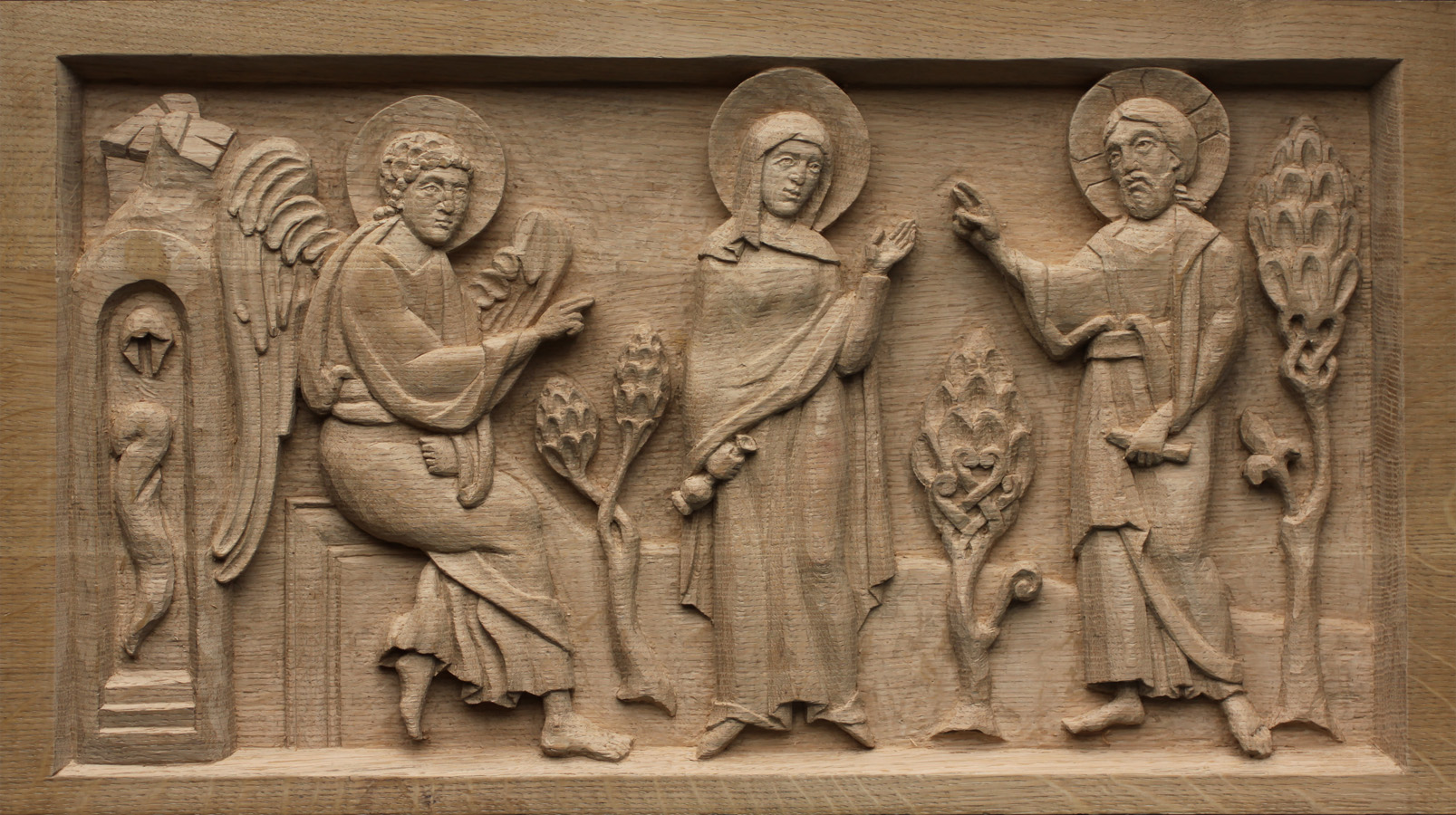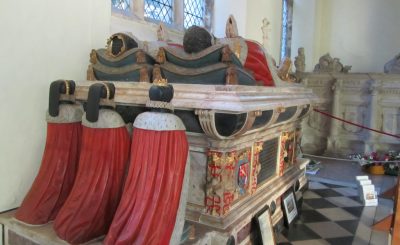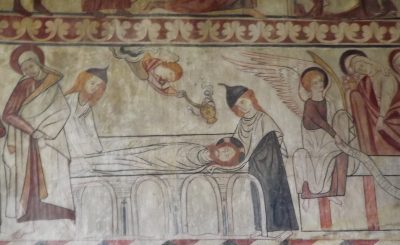The churchyard around the main building is a common feature of UK churches. Often full of fascinating headstones and monuments, it can be a great resource.
Before you begin to explore inside the churchyard, take a walk around the outside and have a look at the walls. These often have old tombstones built into them, missed by the casual observer, offering dates and information about the people buried in the grounds.
As you can enter the churchyard you may have to pass through a Lytch Gate. The Lytch Gate is usually a centrally pivoted gate with a roofed structure. It was originally designed to protect the coffin and its pallbearers from the weather while they waited for a priest to attend them. Nowadays it often serves a far more picturesque purpose acting as an attractive and historic backdrop for wedding photographs.
Prior to the Reformation in the reign of Henry VIII, a substantial stone or wooden cross was situated in a prominent place in every churchyard. A good number of these old crosses were destroyed during the Sixteenth Century but many survived and are worth looking for. Some of these churchyard crosses are Saxon in origin and show traces of intricate stonework. They provide a memorial to people who lived before gravestones were commonly used.
Look closely at the shape of the churchyard. Many churches were built on sites where pagans had previously worshiped. These pagan sites were often circular in shape. When the church is known to be very old, look out for large Sarcen stones in the walls or in fields nearby which may have formed part of a pre-Christian stone circle.
The shape of the church helps to reveal its history. Is it a conventional square building with a tower or steeple? Has it been added to or partly demolished over the years? Does it have any out-buildings? Is there a manor house nearby that would have provided a priest with a living?
Use your observations to work out how the church may have been used in the past.
Many churches were built on the top of a hill. This is because they were used as a defensible position in times of unrest. All the villagers would run to the church, hide inside and lock the doors. Are there arrow slits in the walls that would indicate that the church was used as a fortification?
A few small circular churches were built around the Twelfth Century. They are a rare find. The style of these buildings tends to reflect earlier cultures (mainly Roman). They were mostly built by the military and hospitaller orders of knights (Knights Templar and Order of St John of Jerusalem).
Dating a church by its architecture needs a very careful eye and good reference sources. You might like to obtain a copy of “The Companion to the English Parish Church’ by Stephen Friar, published by Chancellor Books. It is an absolute treasury of information.
The gravestones around an old church can be a fascinating source of local information. Look for regularly occurring dates and names. Perhaps there was a famine that killed a lot of locals in a particular short time period. Recurring family names can indicate inhabitants dating from when the town was founded. Look for the earliest date to try and find the start of the family tree.
Some old churches have box tombs, monuments and even mausoleums. A church at Brightling, East Sussex, has a miniature pyramid in its graveyard put up for Mad Jack Fuller the folly builder.
Each churchyard is different and most churches offer visitors a small pamphlet giving the history of the building and surrounding area.


